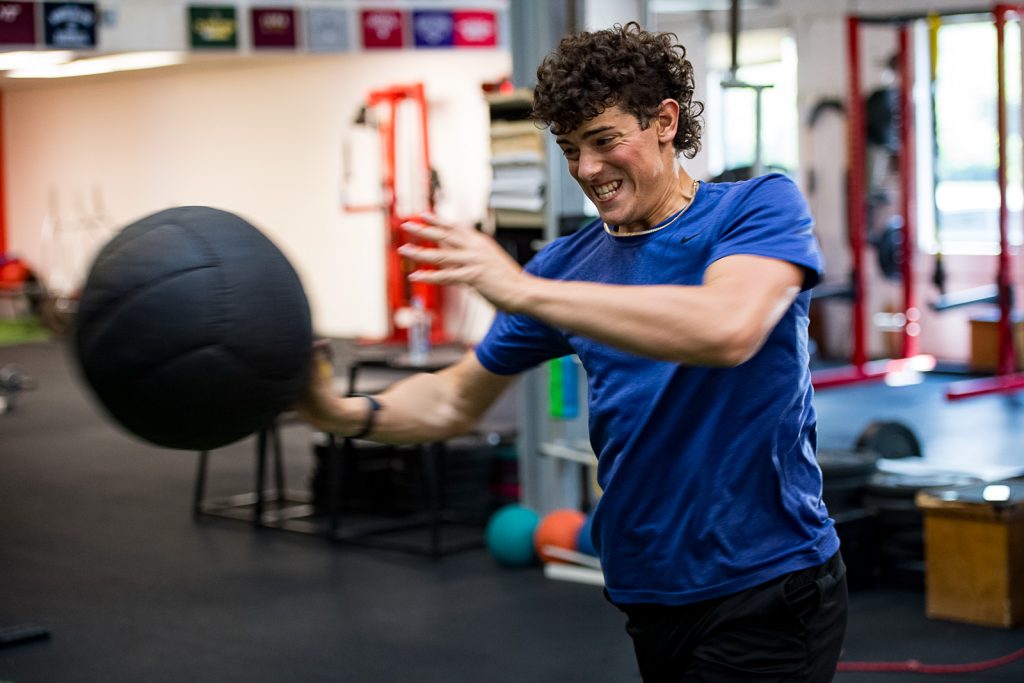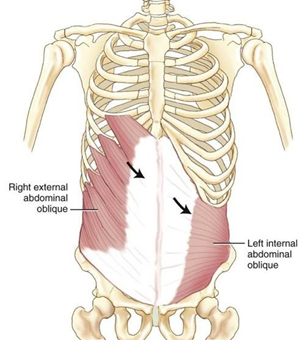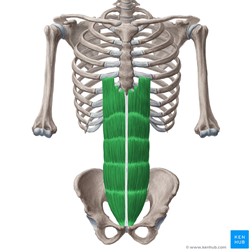
Med balls are a staple in the world of baseball strength and conditioning. This really shouldn’t be much of a surprise. Baseball is a rotational sport, so med ball work provides us with real-world transfer to the sport. It is also one of the only ways to train upper body strength-speed in the frontal plane. Baseball med ball workouts and exercises are applicable to both hitting and pitching and can be used to create more efficient movement patterns and improve sequencing. However, drills using med balls are often performed poorly, largely in part because most athletes do not possess the understanding of what they are trying to accomplish with the exercise.
What Do Med Ball’s Actually Train?
Med ball throws are primarily used to train rotational power. In order to maximize rotational power, an athlete must be strong in both their core and hips. Developing this power includes overall strength but it is also the speed at which these drills are performed that contribute to the amount of power being produced.
As mentioned before, med balls have the ability to work on both strength and speed, with the idea that…
Each and every throw should be performed with full intent from start to finish
Some of the benefits to med ball work include:
-
- Improved hip shoulder separation
- Timing of internal and external rotation of the hips
- Improved ability to hinge
- Proper scapular loading
In order for an athlete’s core to see improvements in both strength and speed, this needs to happen in both the sagittal and transverse planes. Let’s review each separately.
Transverse Plane (rotational)
When working in the transverse plane it is important to understand what muscles are actually being activated with specific med ball drills. The transverse plane can be thought of as rotation around the spine. This means the primary muscles being activated are the external and internal obliques. External Obliques are responsible for opposite side rotation, while internal obliques are responsible for same side rotation. While the entirety of the core is activated for stabilization, the primary movers in a rotational exercise are the obliques.

Med Ball Exercises
Exercises below are listed as a progression from Phase 1 through Phase 3.
Phase 1 – ½ Kneeling Side Throw – Introduces mechanics of upper half rotation
-
- Cues – Stiff front leg, rotation into front hip, scapular rotation around rib cage
Phase 2 – Split Stance Shovel Pass – Progression allowing lower half to become more involved and be more sport specific.
-
- Cues – Work “over” lead leg, deliver force into lead leg, let hips deliver the ball
Phase 3 – Step Back Shovel Pass – Progression with primary focus on getting in and out the back hip quickly.
-
- Cues – Hinge into back hip (loading), hips deliver the ball, “post-up” into lead leg
Sagittal Plane
The sagittal plane can be thought of as dividing the body into left and right. The types of movements that occur in this plane are primarily flexion and extension. When performing med ball exercises in the sagittal plane, the prime mover of the core is the rectus abdominis.
It is important to understand that while the rectus abdominis is the primary mover in the sagittal plane, it does get some help from the obliques in order to help maintain stability throughout the movement.

Med Ball Exercises
Exercises below are listed as a progression from Phase 1 through Phase 3.
Phase 1 – Kneeling OH Catch to Slam – Isolating upper half
-
- Cues – Brace anterior core, catch and slam AFAP, throw ball hard enough to create “pre-load”
Phase 2 – Med Ball Slam – Progression incorporating lower half (full-body).
-
- Cues – Create Triple Extension, Avoid Lower Lumbar Extension, Do Not try to stop the ball on release, Keep the ribs down
Phase 3 – Split Stance Stand Up Slam – Progression emphasizing lead leg blocking.
-
- Cues – Avoid Lower Lumbar Extension, Brace Anterior Core, “Pull” through front heel, Deliver force into the ground
Programming
Early Off-Season
-
- 120-150 Throws/Week
- 2-3 Days/Week
- 2 Drills – 3 x 5/side & 3 x 6 = 48 Throws x 3 Days/Week = 144 Total Throws
- 4-8 lbs. depending on size of athlete
Mid Off-Season
-
- 120-200 Throws/Week
- 3 Days/Week
- 1 Rotational & 1 Overhead per session
- 2 Drills – 3 x 6/side & 3 x 6 = 54 Throws x 3 Days/Week = 162 Total Throws
- 4-8 lbs. depending on size of athlete
Late Off-Season
-
- Primarily Rotational
- 2 Days/Week
- 90-120 Throws
- 2 Drills – 2 x 6/side = 48 Throws x 2 Days/Week = 96 Total Throws
- 4-8 lbs. depending on size of athlete
In-Season
-
- Goal is to reduce Total Volume
- Non-Dominant Side Only
- 1-2 Days/Week
- 2 Drills – 3 x 8 & 3 x 6 = 42 Throws x 2 Days/Week = 84 Total Throws
- 4-8 lbs. depending on size of athlete
By Zach Kollar MS, CSCS (Strength and Conditioning Coach at RPP Baseball)
If you’d like to be placed on our email list please enter your email address below!


